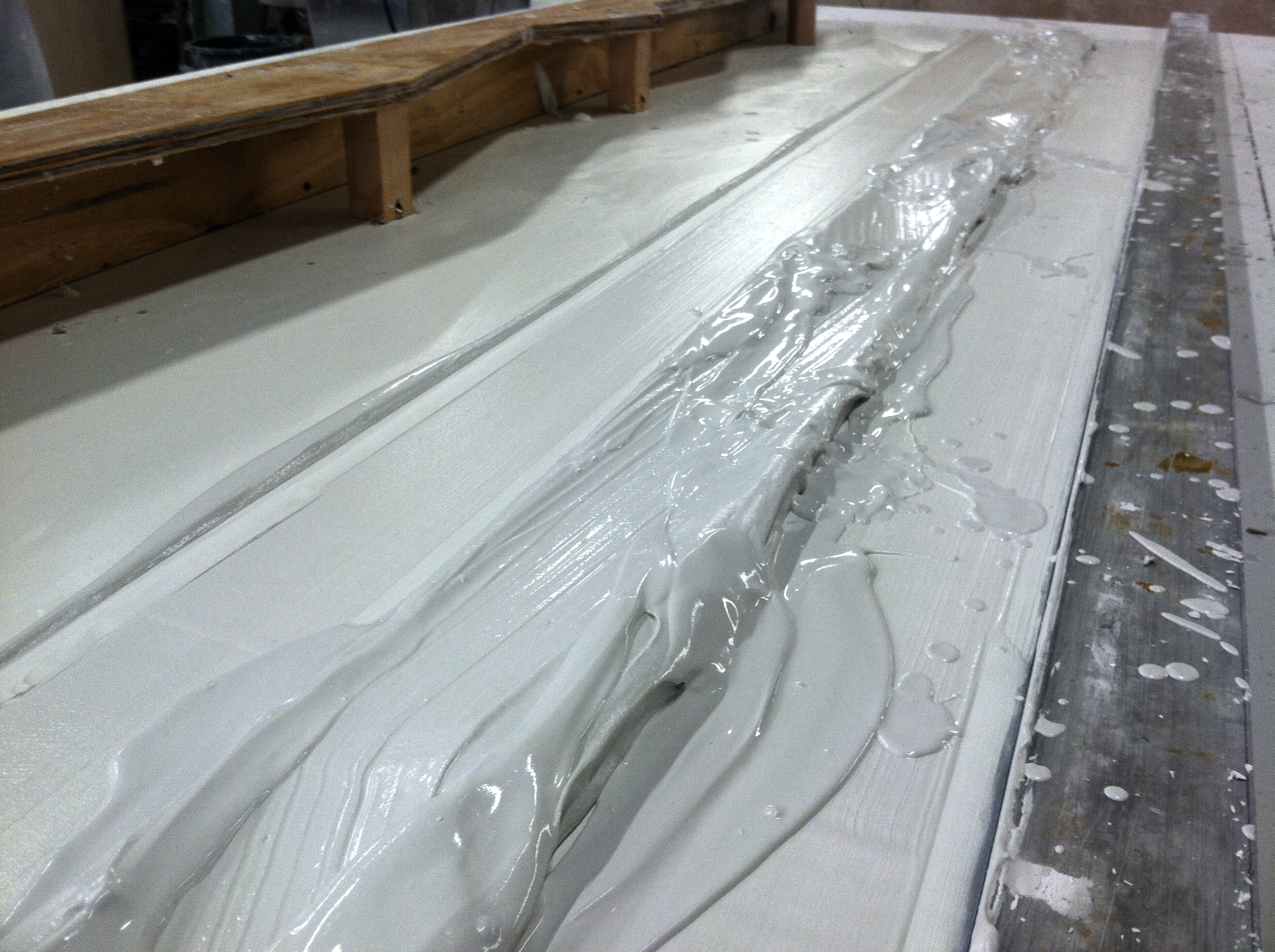
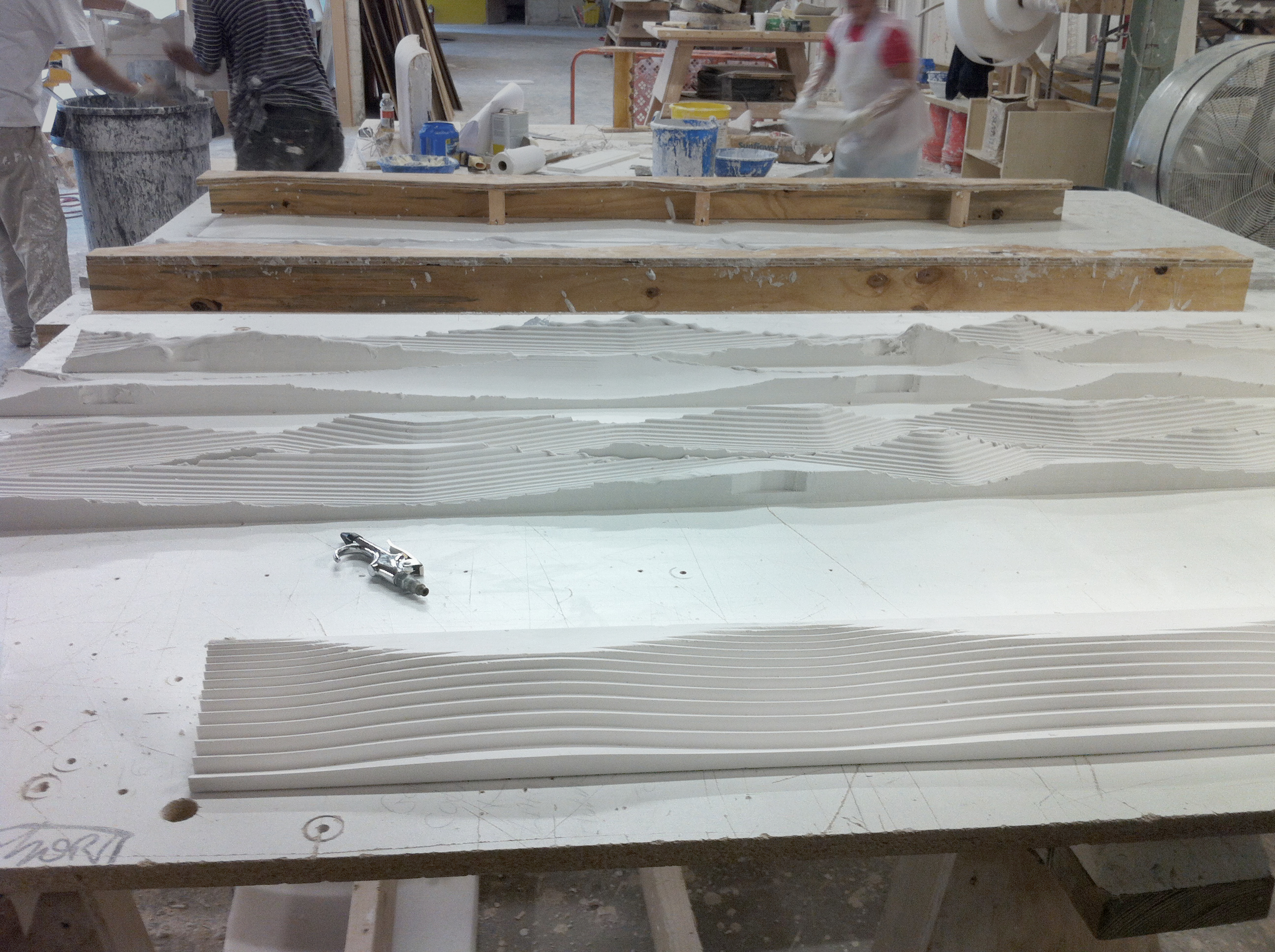

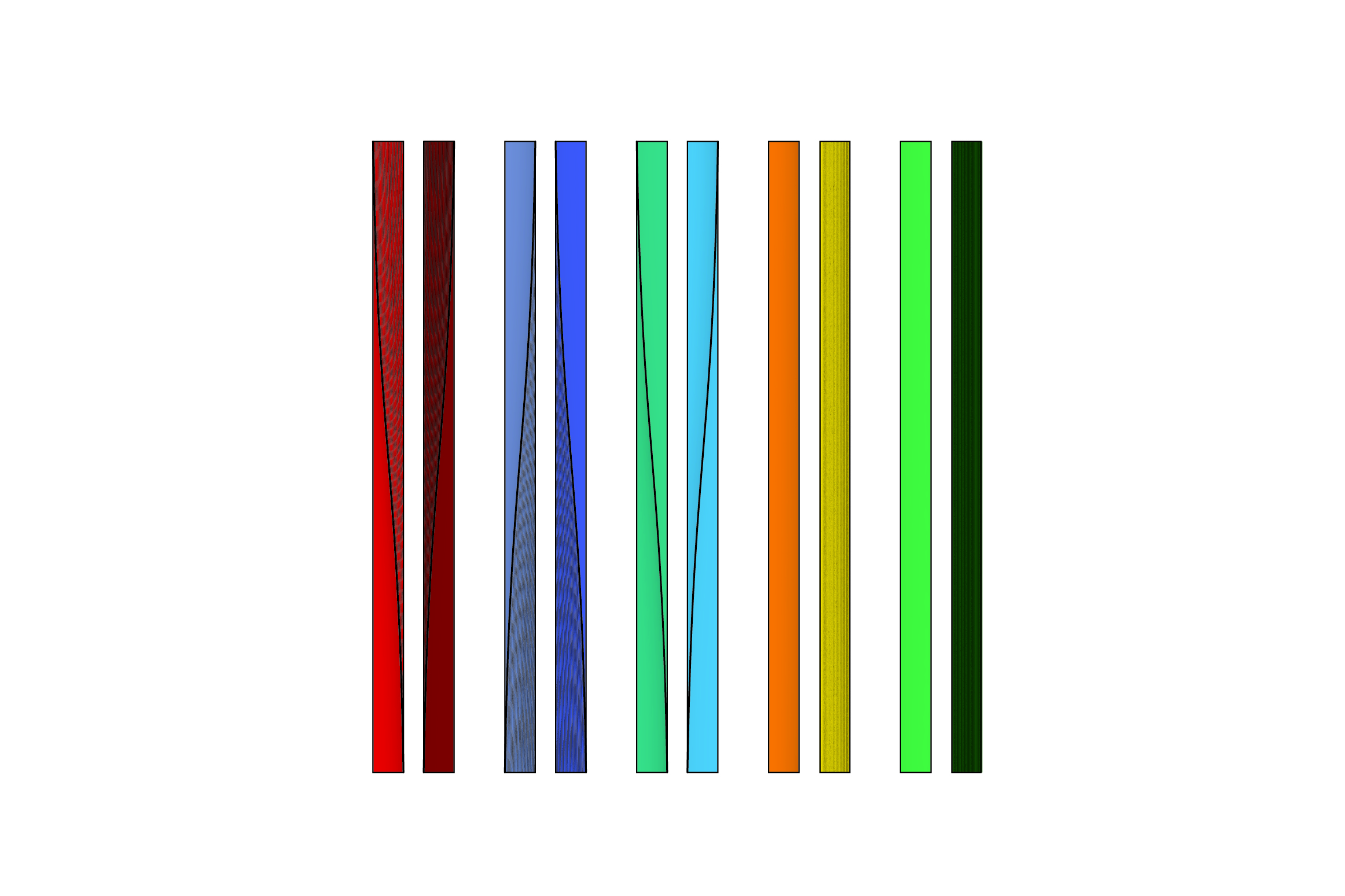


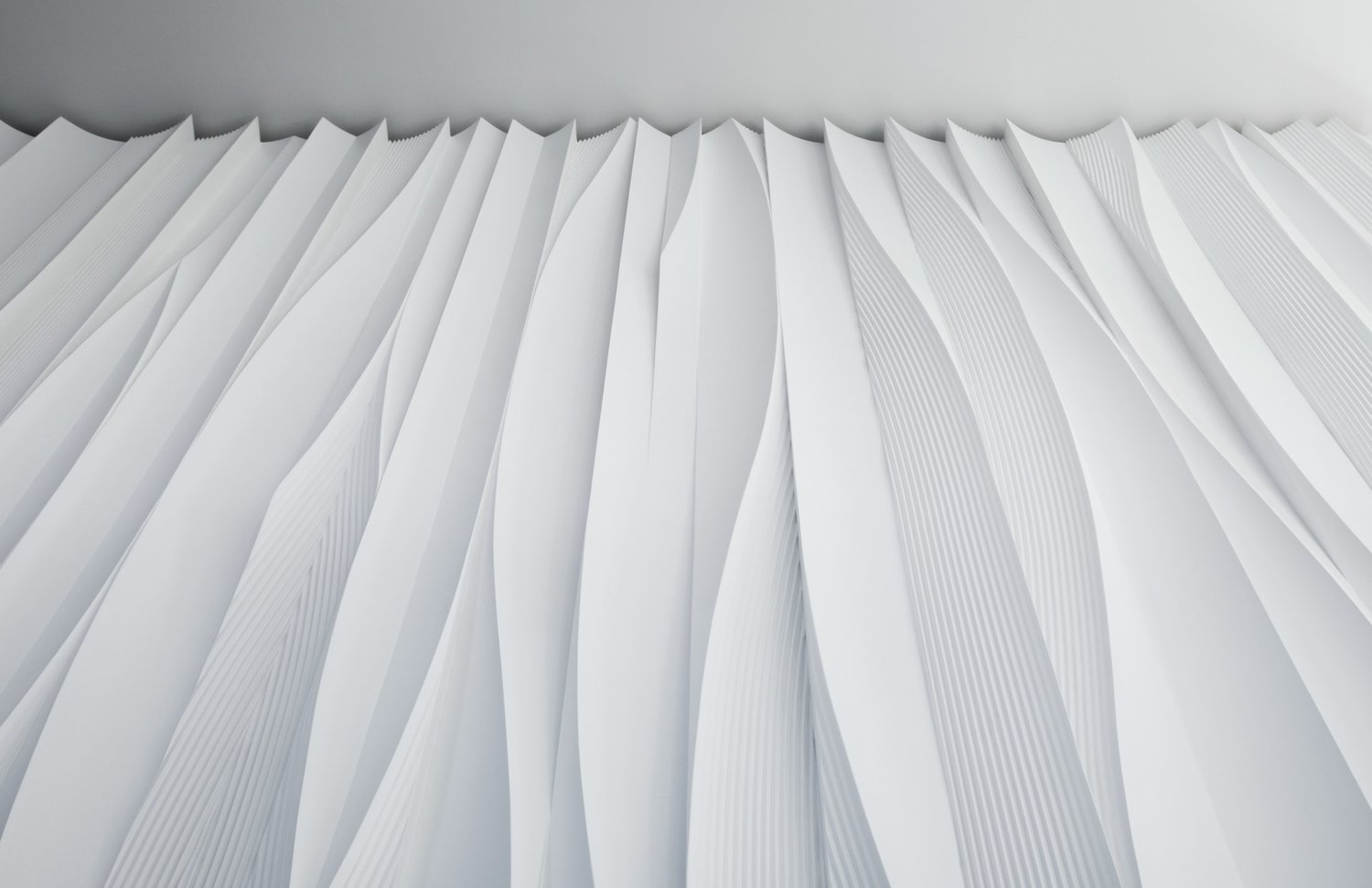
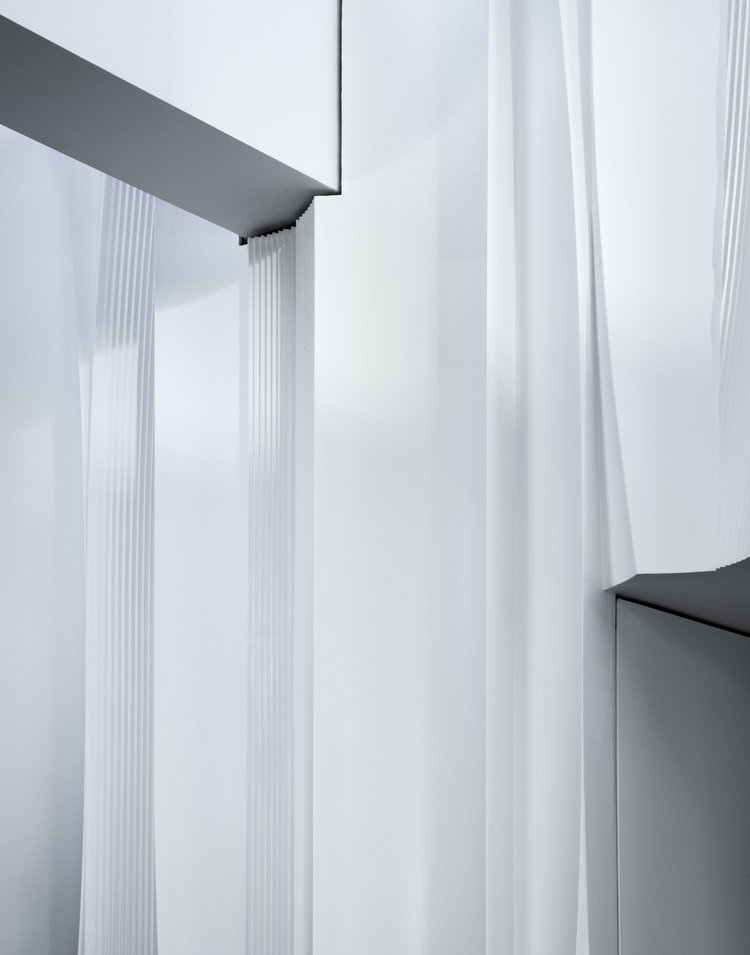

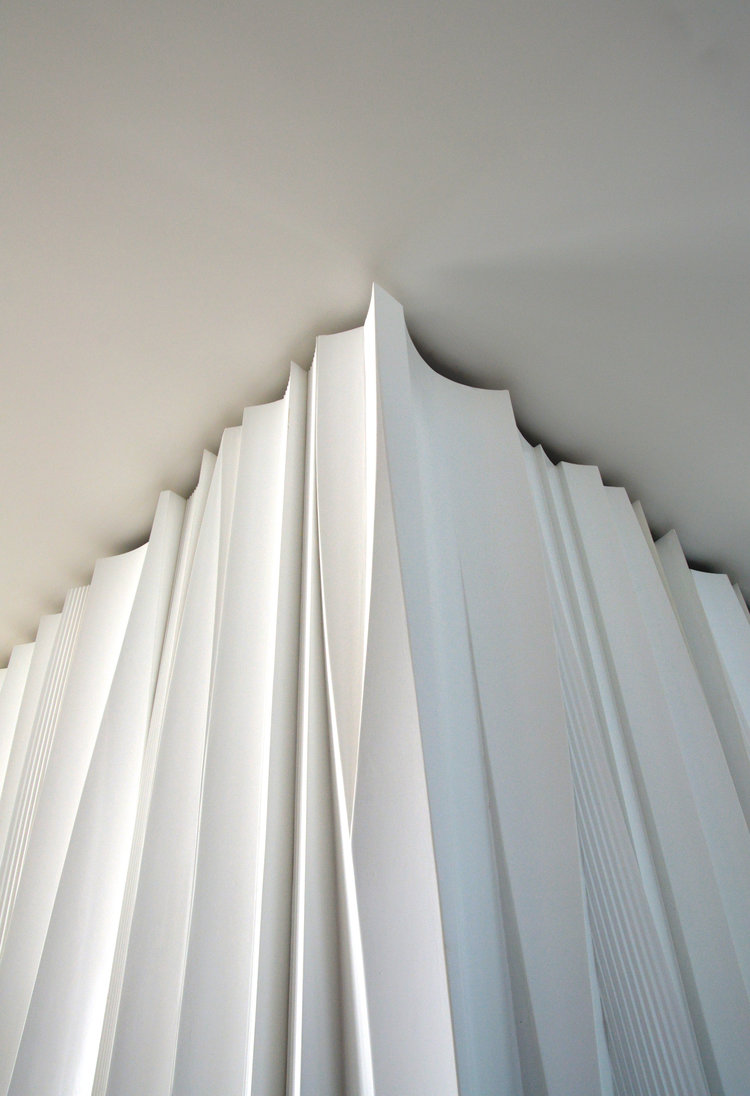
Pulled Plaster Panels
Research
at Pulled Plaster Loft
Tribeca (NYC), New York
Images / Awards + Publications
The spatial parti of the Pulled Plaster Loft is anchored by a monolithic mass serving as the reference for a series of voids and floating volumes that define the public spaces of the house. This core is clad in custom pulled plaster panels, a technique developed through the controlled collision of a centuries-old fabrication technique with contemporary digital design language.
Working with renowned plaster artisans and skilled contractors, we developed a technique for translating the tools used in making traditional crown and base mouldings to a means of generating multiple geometries: sweeps, lofts, and extrusions.
The traditional pulling technique involves repeatedly scouring wet plaster with a contoured die (knife) held by a carrier (horse) that glides along straight rails. The modified technique developed by our firm introduced
the ability of the knife and horse to move independently of one another along curving rails. This allows for the creation of orthogonal tiles where the inscribed profile can oscillate along the length of the tile, both in plan and section, and create elegant, curving forms in addition to simple extrusions.
Plaster Material Research and Fabrication with Butter and Eggs
Selected photography by Naho Kubota
Working with renowned plaster artisans and skilled contractors, we developed a technique for translating the tools used in making traditional crown and base mouldings to a means of generating multiple geometries: sweeps, lofts, and extrusions.
The traditional pulling technique involves repeatedly scouring wet plaster with a contoured die (knife) held by a carrier (horse) that glides along straight rails. The modified technique developed by our firm introduced
the ability of the knife and horse to move independently of one another along curving rails. This allows for the creation of orthogonal tiles where the inscribed profile can oscillate along the length of the tile, both in plan and section, and create elegant, curving forms in addition to simple extrusions.
Plaster Material Research and Fabrication with Butter and Eggs
Selected photography by Naho Kubota